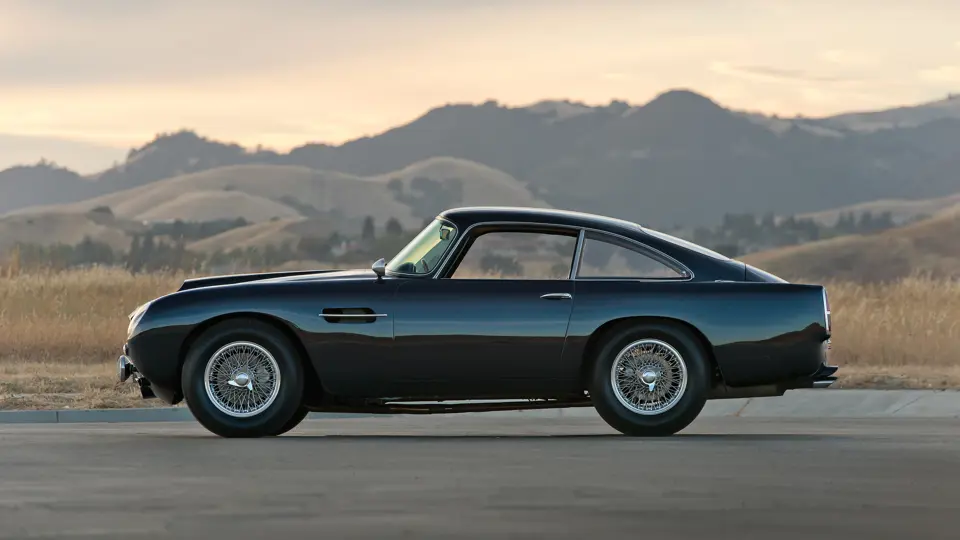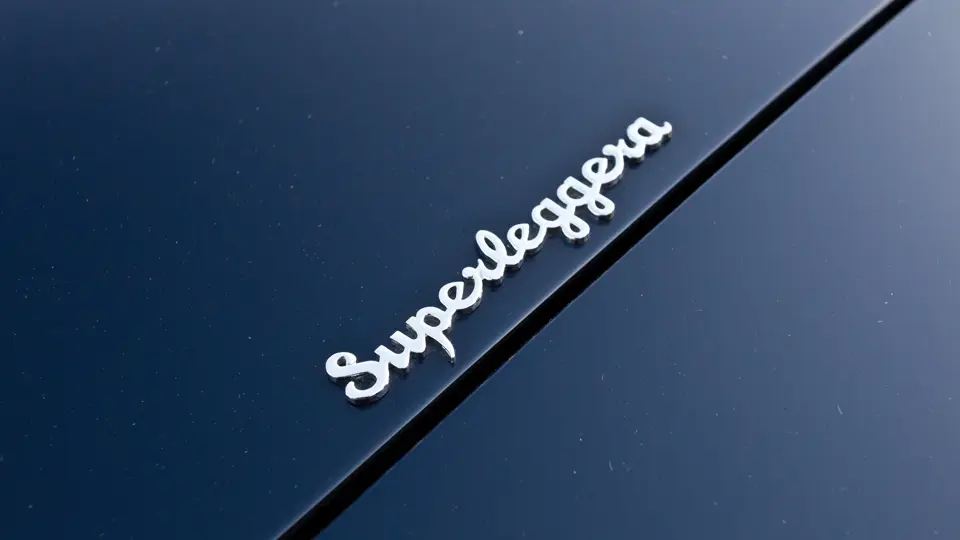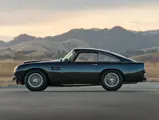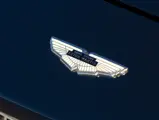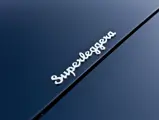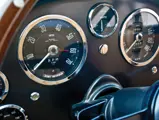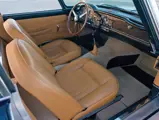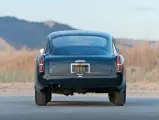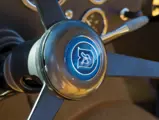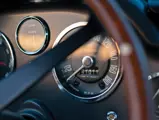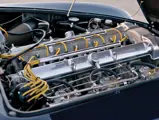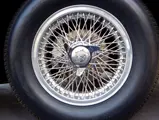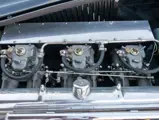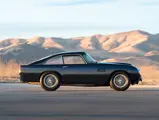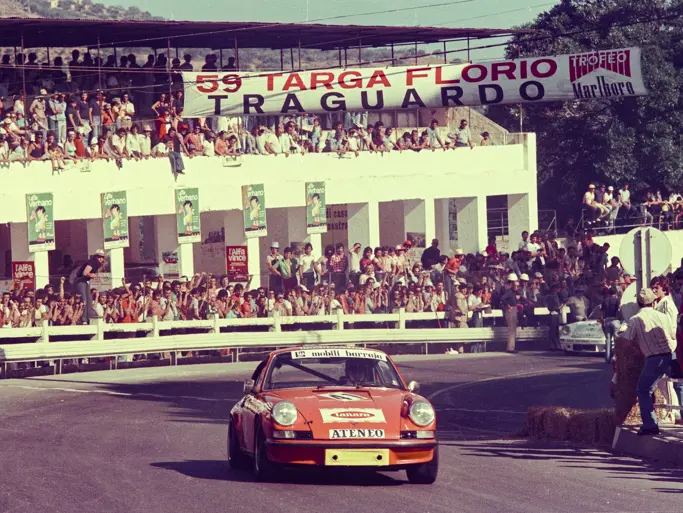302 bhp, 3,670 cc DOHC twin-plug alloy inline six-cylinder engine with triple Weber carburetors, four-speed synchromesh alloy-cased manual transmission with overdrive, four-wheel coil-spring suspension, and four-wheel disc brakes. Wheelbase: 95 in.
THE ASTON MARTIN DB4GT
The 1959 year was a happy one in Newport Pagnell. Aston Martin achieved outright victory at Le Mans, scoring 1st and 2nd overall, with drivers Carroll Shelby and Roy Salvadori at the front, followed by Maurice Trintignant and Paul Frere in second. Aston Martin also took the World Sportscar Championship title, and they were the smallest manufacturer to ever do so, before or since. One of the first cars away at the 24-hour race that year was also an Aston Martin that was painted the same light green as the victorious DBR1s. It was a prototype for a competition-oriented version of the company’s newly introduced grand tourer, the DB4.
In September 1959, the production version of that car, dubbed the DB4GT, debuted at the London Motor Show. It had been developed from the production DB4 for increased performance, and it was shorter, lighter, and more powerful.
The bodywork was of incredibly thin 18-gauge aluminum alloy, the wheelbase was reduced by approximately five inches, and the rear seats were deleted on all but three special-ordered cars, all in order to reduce its weight by some 200 pounds. The engine was extensively modified, with a higher 9:1 compression, a twin-plug dual-ignition cylinder head, and triple dual-throat Weber 45 DCOE carburetors, and it could produce an outstanding 302 brake horsepower at 6,000 rpm. This was a useful increase from the claimed 240 brake horsepower of the standard DB4, and it qualified the DB4GT as the most powerful British automobile of its era. Maximum speeds during testing reached 153 mph, with a 0–60 time of 6.1 seconds. This was also one of the first cars that could go from standstill to 100 mph and then brake to a dead stop in under 20 seconds, which was a tribute, in part, to its uprated Girling braking system, which was used on Aston Martin’s competition sports racers of the era.
Outwardly, the DB4GT was distinguished by faired-in headlamps with Perspex covers, which was a popular feature that was soon adopted for the DB4 Vantage and later the DB5 and DB6 models. The backlight and rear quarter windows were also of Perspex on many examples, but the bumper overriders were deleted and the roll-down windows were frameless within the doors. Twin competition-style, quick-release Monza fuel fillers were added atop each of the rear wings, leading to a high-capacity fuel tank mounted flat in the trunk. Special lightweight Borrani wire wheels, usually with 42 spokes, light alloy rims, and distinctive three-eared knock-offs, completed this potent package.
The interior was trimmed to full Aston Martin road car specification and featured fine Connolly leather upholstery and deep pile Wilton carpet. The evocative dash binnacle on the GT cars benefited from the addition of an oil temperature gauge in addition to the standard array.
DB4GTs represented a strong challenge to the dominance of Ferrari in GT racing, and they enjoyed considerable victories. Starting in 1959, the GT was raced by the Works team and John Ogiar’s Essex Racing Stable and was driven by the likes of Roy Salvadori, Stirling Moss, Jim Clark, and Innes Ireland, earning its stripes every weekend on the racing circuit. In December 1959, at the Bahamas Speed Week, when another driver rolled the DBR2 intended for Moss, the Works “borrowed” back a DB4GT just delivered to a Caribbean customer, and Stirling handily won the next race in an Aston was plucked from the parking lot! Indeed, the GT was a dual-purpose car, equally at ease on the track as it was on a Grand Tour.
As noted by Aston Martin historian Nick Candee, “Rivalry was intense, as Aston broke Ferrari’s winning streak. The short-wheelbase DB4GT was Aston’s response to the Ferrari 250 GT ‘Tour de France.’ Ferrari retaliated late in 1960 with the great 250 GT SWB. Aston then countered with the extremely lightweight DB4GT Zagato in 1961. Ferrari then launched its ne plus ultra GTO in February 1962.” The Cobra-Ferrari wars may be more famous, but the Aston-Ferrari wars were no less fierce.
Between 1959 and 1963, Aston Martin built a mere 75 DB4GTs, and of those, 45 were supplied in right-hand drive and 30 were in left-hand drive. The model remains among the most beloved of all Astons, and it is unmatched for its unique combination of performance and roadability. It is, as Nick Candee described, Aston’s 250 GT TdF, with all the power and all the thrills but at a quarter of the modern-day price.
CHASSIS NUMBER DB4/GT/0119/L
As is recorded on its Aston Martin Dorset build sheet, chassis number DB4/GT/0119/L was delivered on March 15, 1960, to J.S. Inskip, the Aston Martin distributor and dealer in New York City, and a year-long guarantee was also issued the same day. The car was originally finished in Carmine over a black Connolly leather interior, and it featured a Smiths speedometer, a Motorola radio, and Avon Turbospeed tires.
The original owner was a man well known to the sporting circles of the time. Edward Gaylord and his brother, Jim, were the heirs of the inventor of the bobby pin, whose design had been patented and no one ever built a better “mousetrap.” The baby boom made the Gaylord family fabulously wealthy, and the Gaylord brothers, when not running the family business, spent their time indulging their favorite passion: automobiles. Edward Gaylord owned the famous Franay-bodied Rolls-Royce Phantom III that eventually made its way into the Nethercutt and Harrah collections, as well as several important Ferraris and, of course, this DB4GT. The Gaylords even built their own grand tourer, the short-lived Gaylord Gladiator, in 1956.
Mr. Gaylord eventually sold his DB4GT to Ted Holmes, of Mattoon, Illinois, who drove the car to Sebring at least once. Sometime later, Mr. Gaylord repurchased the car, which involved a partial trade with a 1958 Edsel Station Wagon! He sold the Aston to L. Kunetka, whose address was on the tony Lake Shore Drive in Chicago. From Kunetka, it was passed to a James Greener and then to Greener’s niece, Jody Perry. Many of this car’s early years were spent with enthusiasts in the Chicagoland area.
Ms. Perry sold her Aston Martin to well-known Aston enthusiast Gene Sorbo, of Massachusetts, from whom it was acquired in 1989 by another collector, the late Dennis Machul. Mr. Machul was an Aston Martin Owners Club member and was known for his vintage racing activities all over the East Coast. Under his ownership, the car was restored to its present appearance, reportedly with only 40,000 miles on the odometer at the time. Since 2001, the car has remained in prominent collections in the western United States.
The car remains today much as it was when delivered, with the exception of a change in color to the present rich metallic Royal Blue and its tan leather upholstery. A replacement block was installed in earlier ownership, as the original engine had given up while the DB4GT was being used as its manufacturer intended. Chrome wires shod in blackwall tires, dual fog lamps mounted below the nose, and the DB4GT’s usual lack of bumpers give the car a wonderfully sporting and purposeful appearance, as if it is just begging to take to the track for more happy miles.
The DB4GT is one of the most desirable Aston Martin models. It provides an unmatched and thrilling road going experience for the true enthusiast and has been best described as the automobile that James Bond would have driven on weekend track days. This original U.S.-delivery, left-hand-drive car, which has known history since new that begins with one of the Midwest’s best-known connoisseurs, is a wonderful example.





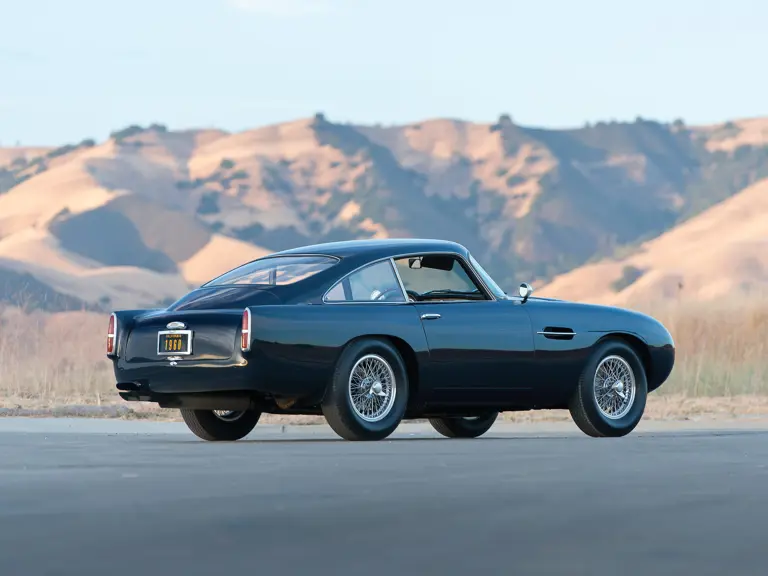



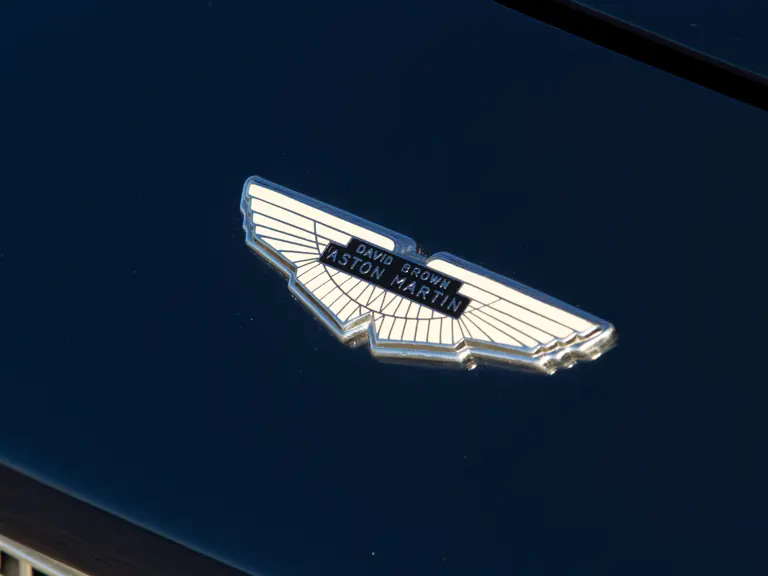
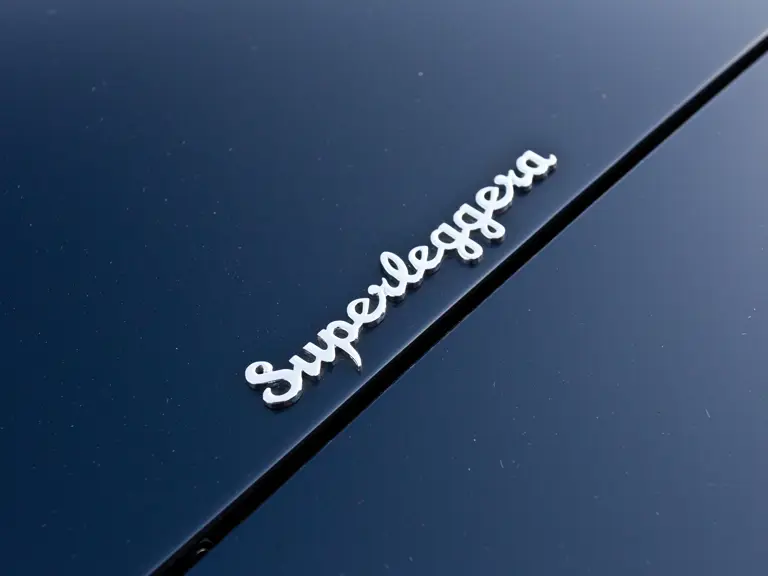
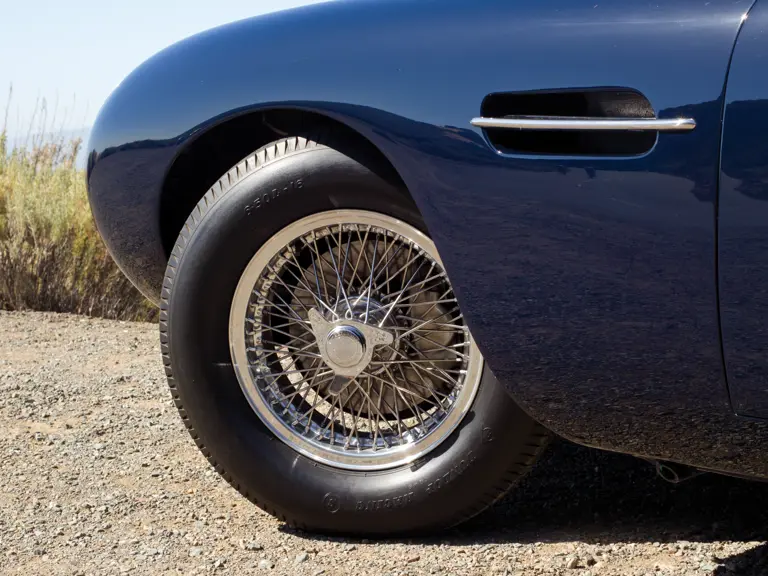


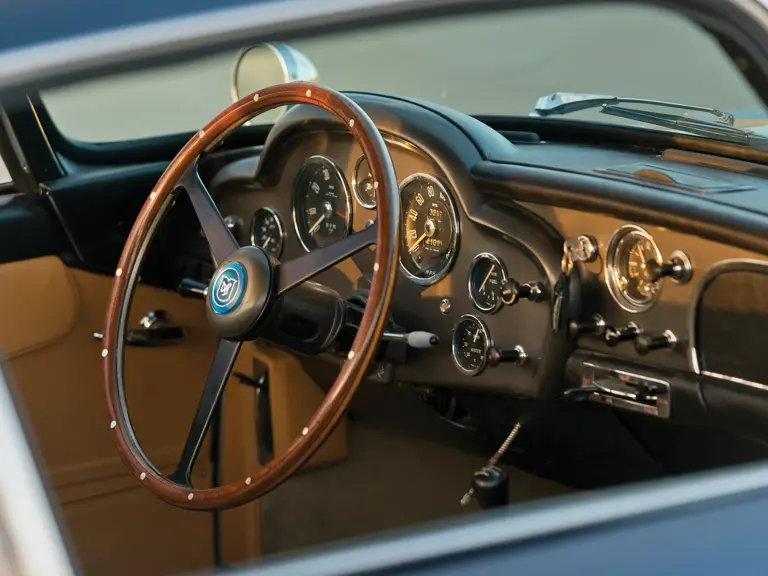
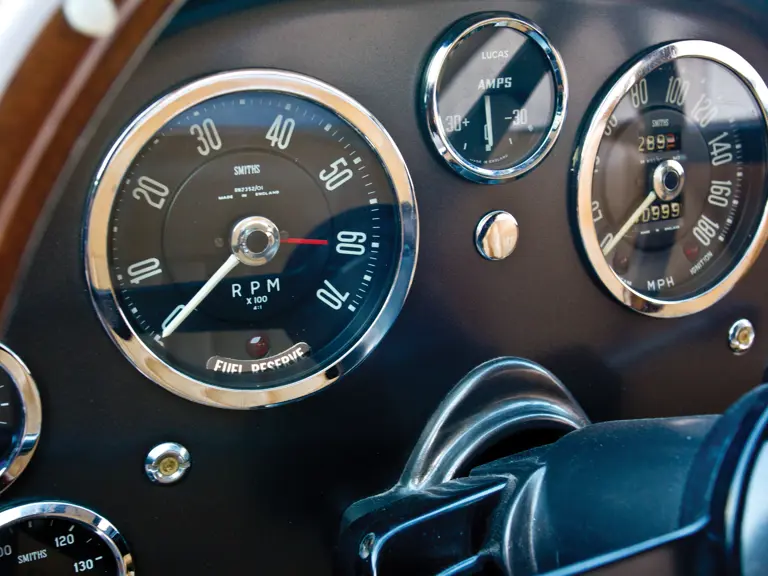
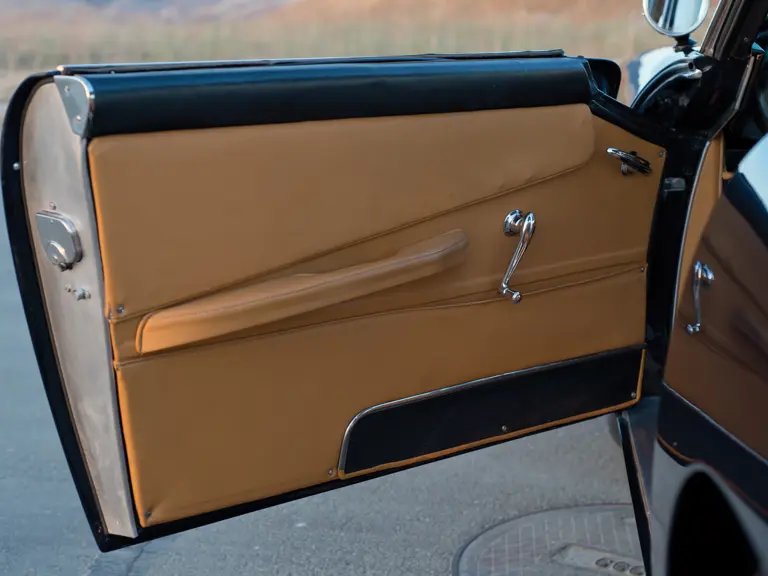
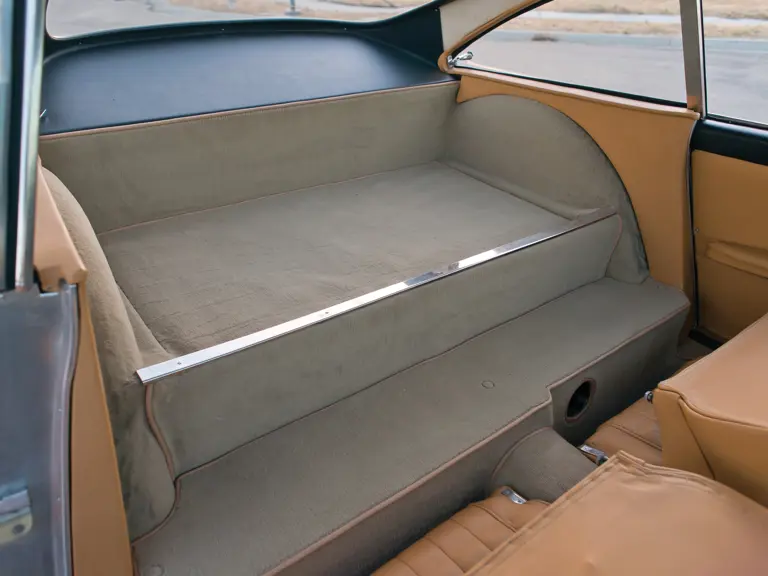

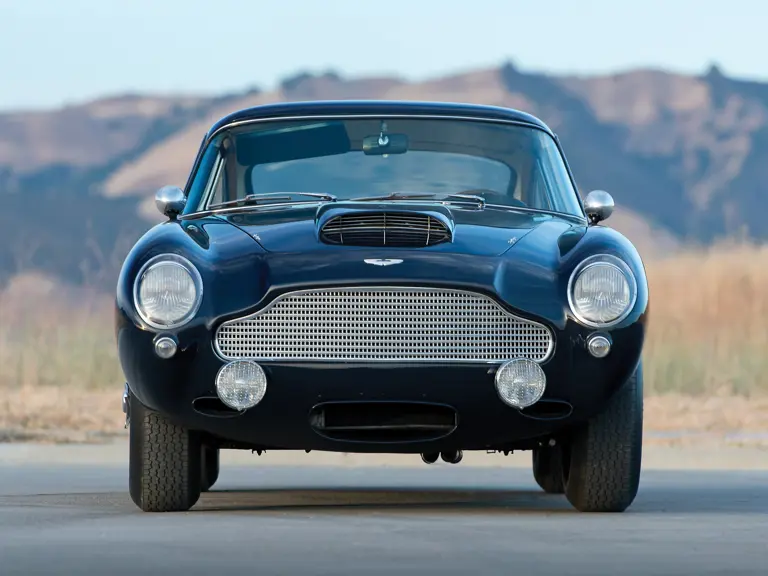
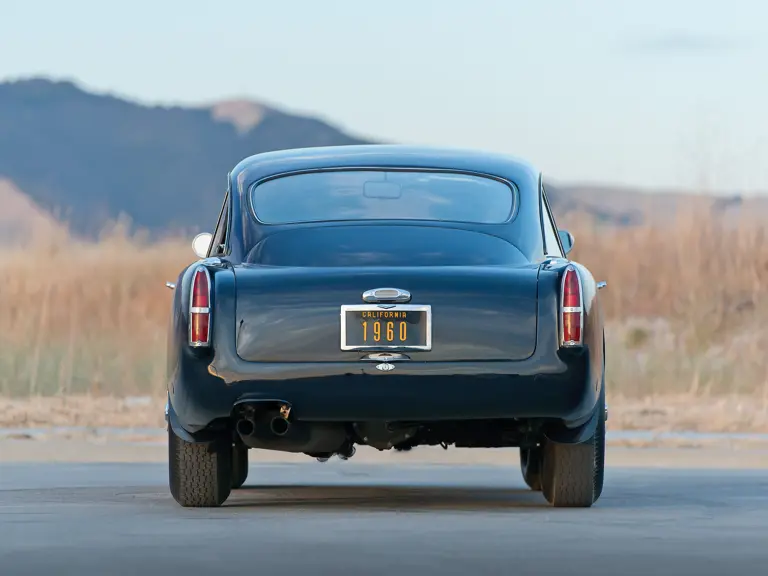
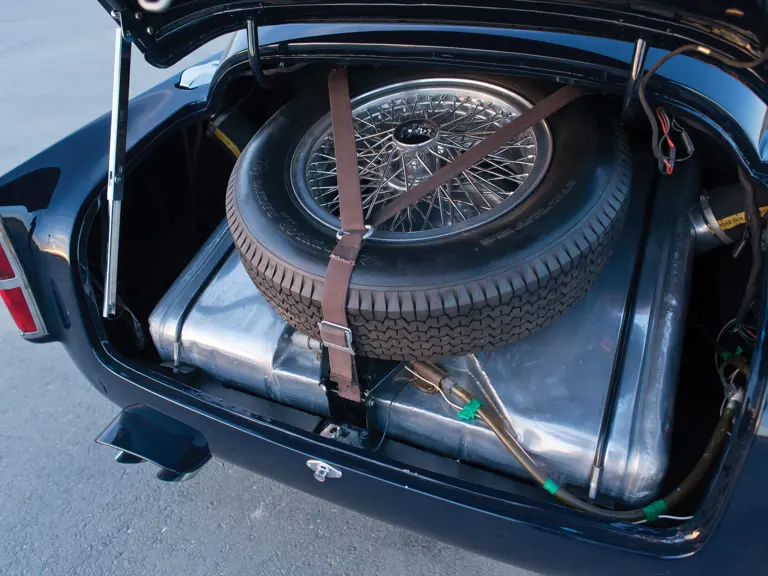
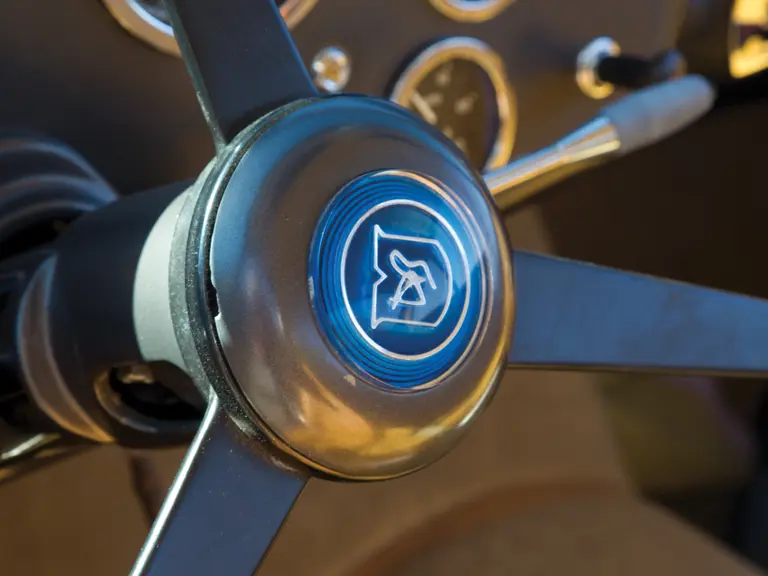
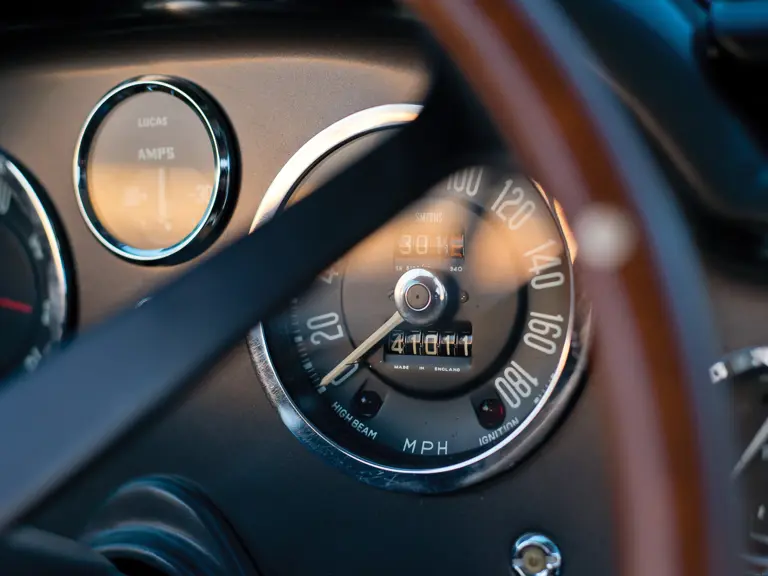
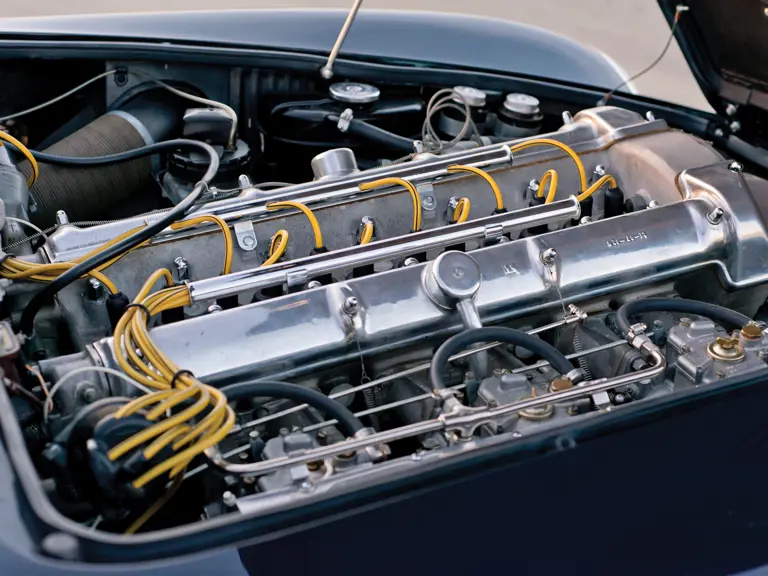

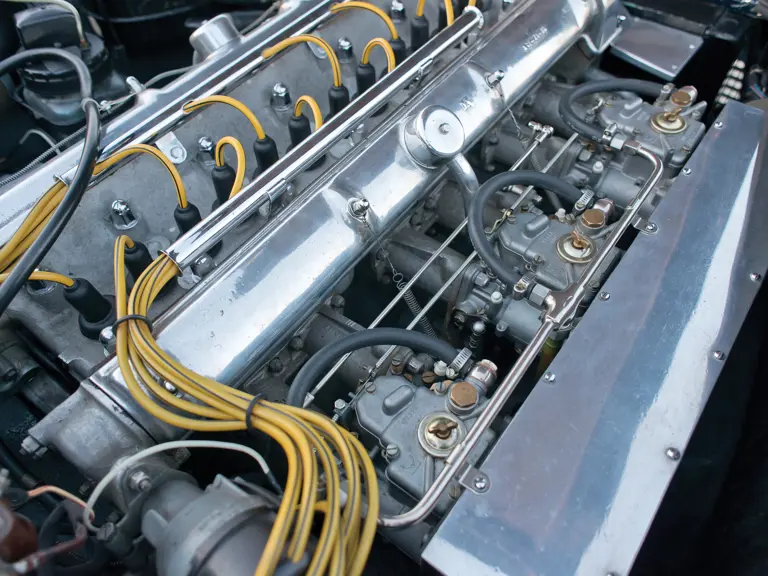
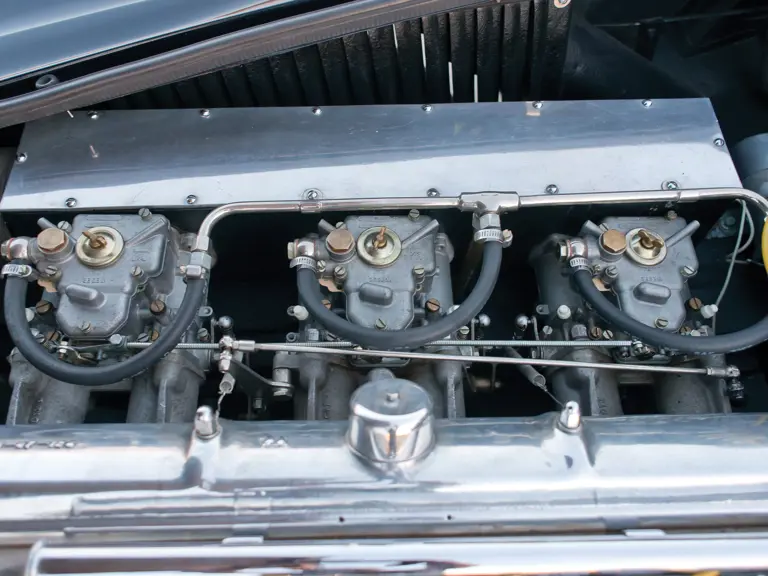


 | Monterey, California
| Monterey, California
